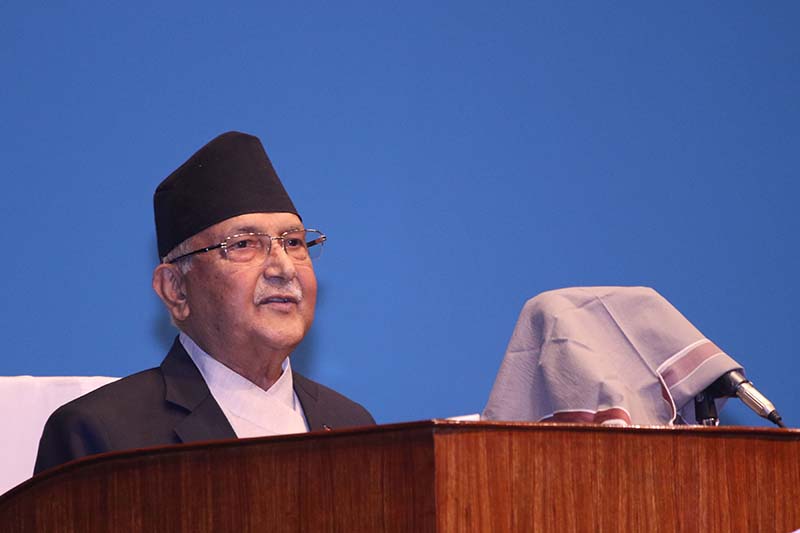PM Oli stirs nationalist sentiments to hide govt failure
KATHMANDU, JUNE 10
At a time when the government is being criticised for its failure to check the spread of the coronavirus and not using the lockdown period to prepare itself for the rising number of COVID-19 patients, Prime Minister KP Sharma Oli today tried to deflect attention from his government’s shortcomings by stirring up nationalist sentiments.
While addressing the House of Representatives, he claimed that Kalapani area was occupied by India and the border row would be resolved only when India returned Limpiyadhura, Lipulekh and Kalapani to Nepal.
The PM claimed that Nepal had control over Kalapani, Limpiyadhura and Lipulekh before India stationed its troops in Kalapani.
“It was only after India stationed its troops in Kalapani that we could not go to Kalapani, Limpiyadhura or Lipulekh,” the PM said and added that his government would reclaim these areas on the basis of evidence and historical facts. “This government does not take whimsical action. It makes a conscious decision on matters of national sovereignty, territorial integrity and national interests on the basis of evidence and historical facts and once it takes a call, it sticks to its decisions,” the PM added.
He also accused India of creating a fake Kali river to lay claim to Nepali territory in Kalapani area.
Oli said the government was confident that it would reclaim these territories through diplomatic means and dialogue with India. The PM thanked lawmakers and political parties represented in the Parliament for unanimously adopting the government’s proposal to hold in principle debate on the government’s constitution amendment bill that seeks to amend Schedule 3 of the constitution to update Nepal’s map in the national emblem.
The PM said passing of the government’s proposal yesterday by all lawmakers and parties unanimously reflected national unity.
Responding to lawmakers’ queries on budgetary allocations, the PM said the government was doing everything in its power to stem the threat of COVID-19, but the government was still facing challenges as the number of migrant workers and students coming from India was quite high.
He said up to 9,000 people were returning from India every day and the total number of people who might return to Nepal in the face of the COVID-19 pandemic from all countries could reach three million.
The PM claimed that although the number of COVID-19 deaths had risen to 15, the actual cause of some of those listed as dying from the coronavirus was other illnesses. He said health authorities were bound to list death of COVID-infected people as COV- ID-19 death even if they had died of comorbidities, as that was the WHO guideline. The PM claimed that Nepalis had better immunity without providing any scientific basis for his claim.
Even though the number of tests conducted by health authorities to diagnose COVID-19 was abysmally low, the PM claimed that the government was ahead of many countries in terms of COVID-19 tests per million population.
He didn’t name those countries. The PM said he had no lust for centralising power and that his government’s decision to bring some agencies under the Prime Minister’s Office was done only to enhance the effectiveness of those agencies.
Stating that the government will have zero tolerance towards corruption, the PM urged lawmakers not to suspect corruption in all actions of the government. “I cannot imagine anybody indulging in corrupt practices in the time of pandemic, but if anybody has embezzled money, then they will not be spared,” the PM said.
He blamed critics, and even media, for ‘indulging in smear campaign’ against the president, terming their criticism as acts against republican order.
“Does the president or the prime minister tell officers to change carpets in the president or prime minister’s office?” the PM wondered. His remarks were directed at lawmakers who had said that the government had given priority to change carpets in the president’s office rather than focusing its efforts on COV- ID-19 control.
A version of this article appears in e-paper on June 11, 2020, of The Himalayan Times.






